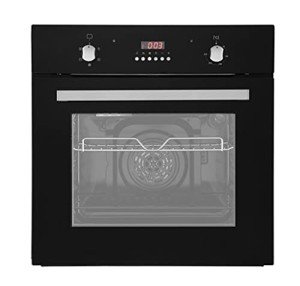The Rise of Built-In Ovens: A Seamless Approach to Modern Cooking
In modern kitchen areas, where design aesthetic appeals mix seamlessly with performance, one home appliance stands out as a true video game changer: the built-in oven. As homeowners and chefs alike continue to seek innovative options that enhance their cooking experience, built-in ovens have become progressively popular. This short article explores the benefits, factors to consider, and trends surrounding built-in ovens, highlighting why they are a vital function in contemporary cooking spaces.
What is a Built-In Oven?
A built-in oven is a cooking area appliance developed to be integrated into the kitchen cabinetry of a cooking area rather than standing alone. Unlike conventional freestanding ovens, which can be moved and positioned anywhere, built-in ovens been available in various designs and sizes to fit specifically within designated spaces. Available in single or double setups, these ovens offer a structured look that complements modern-day kitchen styles.
Benefits of Built-In Ovens
1. ovens integrated -Saving Design
Among the most enticing advantages of built-in ovens is their space-saving design. By integrating the oven into kitchen cabinetry, you can maximize important counter and floor space. This is especially useful in smaller sized cooking areas, where making the most of space is necessary. Built-in ovens can be set up at eye level, making them more accessible and reducing the requirement to flex down.
2. Visual Appeal
Built-in ovens add to a streamlined and cohesive cooking area design. Readily available in different surfaces-- such as stainless steel, black, white, and custom cabinetry-- they can blend seamlessly into the general decoration. This aesthetic appeal enhances the kitchen area's visual harmony and elevates the area, creating a modern and sophisticated environment.
3. Improved Functionality
Lots of built-in ovens come geared up with innovative cooking technologies, such as convection cooking, steam ovens, and clever functions. These enhancements enable versatile cooking choices, making it simpler to achieve professional-level outcomes in the house. Smart built-in ovens can even connect to Wi-Fi, allowing users to control the oven remotely, receive alerts, and access a range of cooking programs and dishes.
4. Enhanced Ventilation
Since built-in ovens can be integrated with kitchen hoods and ventilation systems, they can assist preserve better air quality and lower cooking odors. This is especially significant for those who love to prepare with aromatic spices and active ingredients, as an efficient ventilation system can keep the kitchen area comfy and inviting.
5. Personalization Options
Built-in ovens offer a large range of personalization options to fit specific cooking designs and requirements. From professional-grade home appliances with numerous cooking modes to compact styles for smaller kitchens, homeowners can pick the oven that fits their specific requirements. Many makers also provide personalized front panels, permitting you to match the oven's look to your kitchen cabinetry for a truly merged appearance.
Considerations When Choosing a Built-In Oven
While built-in ovens have numerous benefits, there are necessary considerations to remember before buying:
1. Rate
Built-in ovens normally come with a higher price than their freestanding counterparts due to their style and setup requirements. It's essential to consider both the cost of the oven and any additional expenses associated with cabinetry adjustments or installation.
2. Setup Requirements
Setting up a built-in oven often requires professional support, especially if you require to customize existing kitchen cabinetry. Guarantee that you consider any costs connected with setup, consisting of labor and potential cabinetry adjustments.
3. Size and Dimensions
Before purchasing a built-in oven, determine the designated space accurately to guarantee an appropriate fit. Built-in ovens been available in various sizes and configurations, so picking one that lines up with your needs and kitchen area style is essential.
4. Way of life and Usage
Consider your cooking habits and needs when selecting a built-in oven. If you often host large gatherings, a double oven may be more advantageous. On the other hand, if you have a compact cooking area, a single-wall oven might be adequate.
built in electric ovens in Built-In Ovens
The kitchen device market is continuously developing, and built-in ovens are not exempt from emerging patterns. Some current trends include:
Smart Technology Integration: With the increase of wise home technology, built-in ovens now frequently feature connection alternatives. This enables users to keep track of cooking development and change settings via mobile apps.
Energy Efficiency: As sustainability becomes a concern, numerous manufacturers are investing in energy-efficient built-in ovens that minimize energy intake while preserving efficiency.
Multi-functional Designs: Built-in ovens now offer features such as air frying, sluggish cooking, and steaming, supplying flexibility that fulfills a large range of cooking approaches.
Conclusion
Built-in ovens unquestionably represent a best mix of style, function, and convenience in today's kitchen areas. As more homeowners choose this modern solution, the focus shifts to creating a cooking area that is as visually pleasing as it is useful. Whether you are constructing a new home or renovating your kitchen area, thinking about a built-in oven might elevate your cooking experience and transform your kitchen area into a stylish and functional sanctuary. With a selection of choices readily available and continuous developments in innovation, built-in ovens remain a standout choice for both novice cooks and cooking lovers alike.

